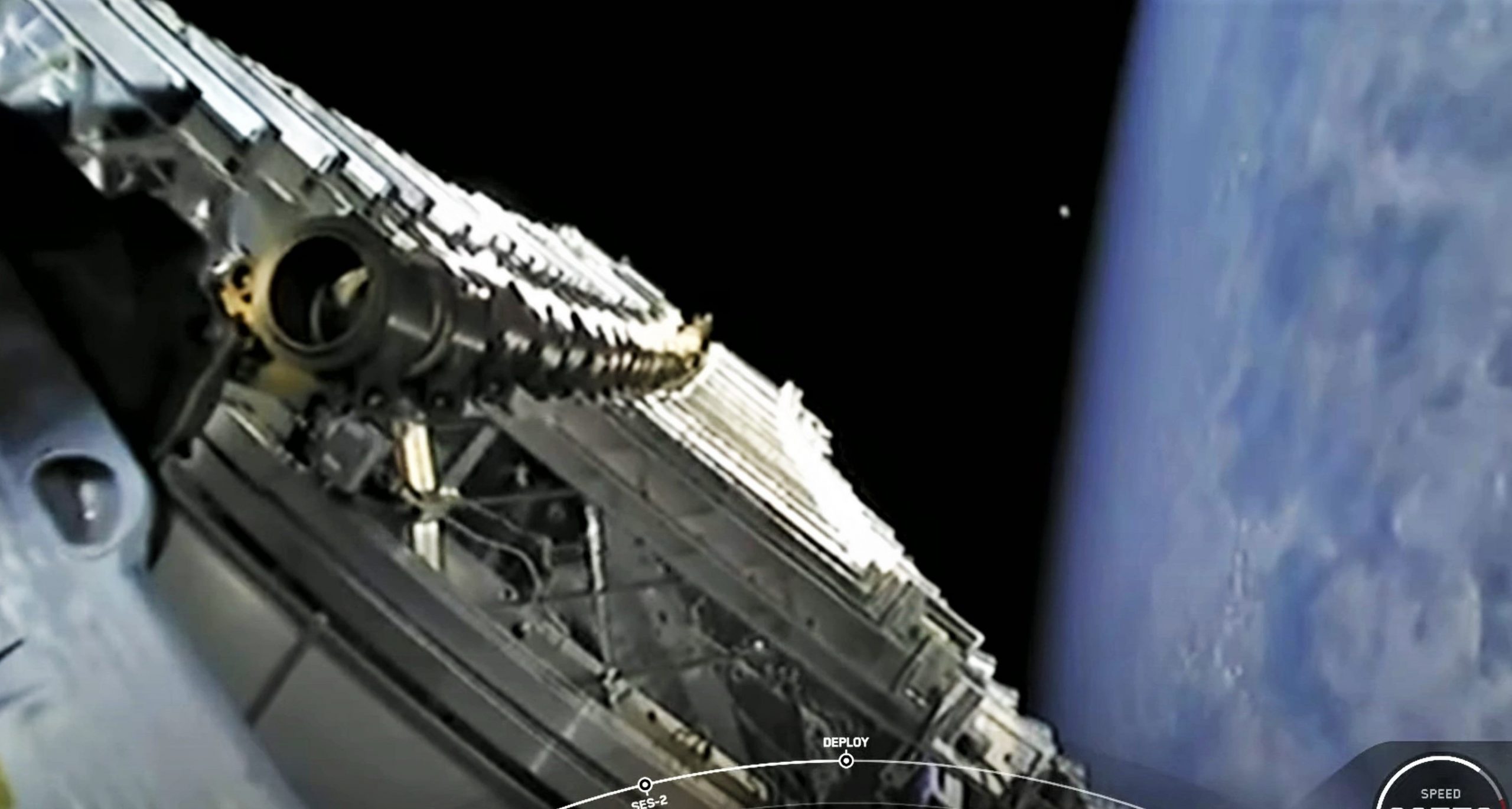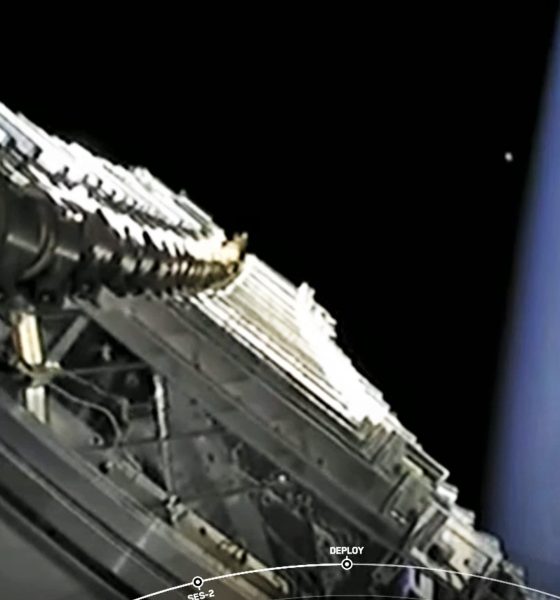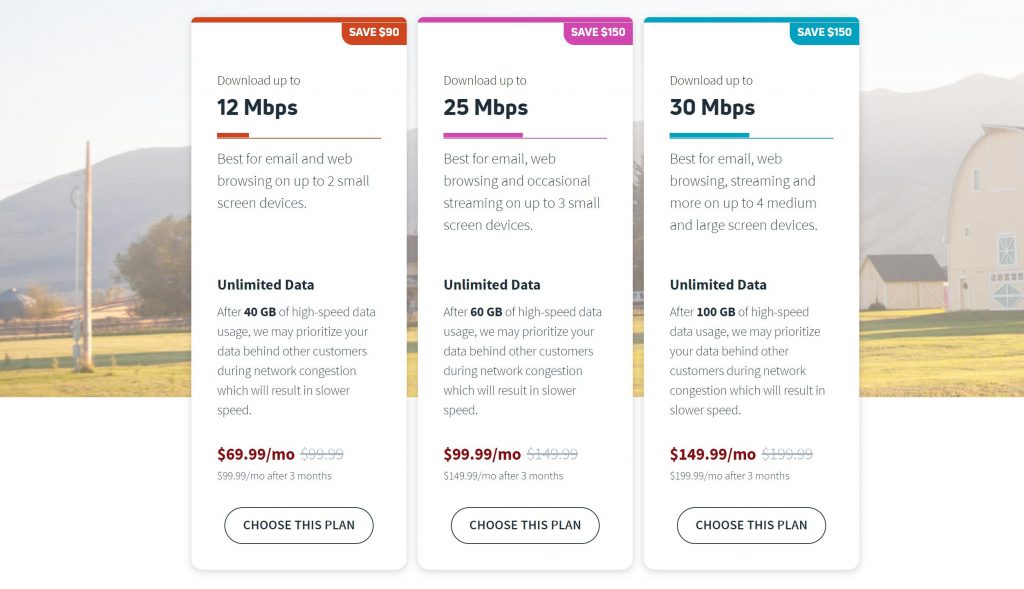

News
ViaSat asks FCC to halt SpaceX Starlink launches because it can’t compete
Under the hollow pretense of concern for the environment, Starlink satellite internet competitor ViaSat has asked the Federal Communication Commission (FCC) to force SpaceX to stop Starlink launches and threatened to take the matter to court if it doesn’t get its way.
A long-time satellite internet provider notorious for offering expensive, mediocre service with strict bandwidth restrictions, ViaSat has also been engaged in a years-long attempt to disrupt, slow down, and even kill SpaceX’s Starlink constellation by any means necessary. That includes fabricating nonsensical protests, petitioning the FCC dozens of times, and – most recently – threatening to sue the agency and federal government as the company becomes increasingly desperate.
The reason is simple: even compared to SpaceX’s finicky, often-unreliable Starlink Beta service, ViaSat’s satellite internet is almost insultingly bad. With a focus on serving the underserved and unserved, SpaceX’s Starlink beta users – many of which were already relying on ViaSat or HughesNet internet – have overwhelmingly described the differences as night and day.
In simple terms, if given the option, it’s extraordinarily unlikely that a single public ViaSat subscriber would choose the company’s internet over SpaceX’s Starlink. While Starlink currently requires subscribers to pay a substantial upfront cost – ~$500 – for the dish used to access the satellite network, ViaSat internet costs at least as much per month. Currently, new subscribers would pay a bare minimum of ~$113 per month for speeds up to 12 Mbps (akin to DSL) and an insultingly small 40GB data cap. For a 60GB cap and 25 Mbps, subscribers will pay more than $160 per month after a three-month promotion.

With a fixed cost of $99 per month, truly unlimited data, and uncapped speeds that vary from 50 to 200+ Mbps, any ViaSat “silver” subscriber would receive far better service by switching to Starlink and save enough money to pay off the $500 dish in less than a year. While Starlink is currently in beta and often unstable and unreliable as a result, users continue to notice major improvements in speeds and uptime as SpaceX works to continuously improve the network.
In the US, ViaSat has less than 600,000 household internet subscribers, all of which are almost certainly liable to switch to better alternatives. Short of local and state governments actually standing up for their citizens and forcing monopolistic ground-based internet service providers (ISPs) to fairly serve rural customers, Starlink is currently the only real hope for rural Americans who are tired of settling for second-class internet service.
ViaSat began its latest push to hamstring a looming competitor with regulation when it asked the FCC to perform an environmental review of Starlink’s impact last December. The FCC unsurprisingly failed to heed the company’s spurious, nakedly self-serving demands. Since then, the FCC approved a long-standing SpaceX request to modify its Starlink constellation by lowering thousands of satellites, thus improving service and drastically decreasing the debris risk posed by satellite failures, which would take a few years to reenter from 550 kilometers instead of decades for spacecraft orbiting at 1000+ kilometers.
To a very small extent, there are some real questions worth asking about the environmental impact of megaconstellations. A few recent studies have begun to do so, though it’s such a new field of inquiry that virtually nothing is known with any confidence. However, ViaSat is transparently disinterested in the actual environmental impact given that its petition for the FCC to immediately halt all Starlink launches focuses on Starlink alone and not competitor OneWeb – also in the process of launching satellites – or prospective constellations being developed by Telesat and Amazon.
What ViaSat actually wants is for the FCC to catastrophically hamstring Starlink, thus saving the profit-focused company from having to actually work to compete with an internet service provider that is all but guaranteed to capture most of its subscribers on an even playing field. Incredibly, ViaSat actually removes its greenwashing mask in the very same FCC request [PDF], stating that it “will suffer competitive injury” if Starlink is allowed to “compete directly with Viasat in the market for satellite broadband services.”

News
Tesla is not sparing any expense in ensuring the Cybercab is safe
Images shared by the longtime watcher showed 16 Cybercab prototypes parked near Giga Texas’ dedicated crash test facility.

The Tesla Cybercab could very well be the safest taxi on the road when it is released and deployed for public use. This was, at least, hinted at by the intensive safety tests that Tesla seems to be putting the autonomous two-seater through at its Giga Texas crash test facility.
Intensive crash tests
As per recent images from longtime Giga Texas watcher and drone operator Joe Tegtmeyer, Tesla seems to be very busy crash testing Cybercab units. Images shared by the longtime watcher showed 16 Cybercab prototypes parked near Giga Texas’ dedicated crash test facility just before the holidays.
Tegtmeyer’s aerial photos showed the prototypes clustered outside the factory’s testing building. Some uncovered Cybercabs showed notable damage and one even had its airbags engaged. With Cybercab production expected to start in about 130 days, it appears that Tesla is very busy ensuring that its autonomous two-seater ends up becoming the safest taxi on public roads.
Prioritizing safety
With no human driver controls, the Cybercab demands exceptional active and passive safety systems to protect occupants in any scenario. Considering Tesla’s reputation, it is then understandable that the company seems to be sparing no expense in ensuring that the Cybercab is as safe as possible.
Tesla’s focus on safety was recently highlighted when the Cybertruck achieved a Top Safety Pick+ rating from the Insurance Institute for Highway Safety (IIHS). This was a notable victory for the Cybertruck as critics have long claimed that the vehicle will be one of, if not the, most unsafe truck on the road due to its appearance. The vehicle’s Top Safety Pick+ rating, if any, simply proved that Tesla never neglects to make its cars as safe as possible, and that definitely includes the Cybercab.
Elon Musk
Tesla’s Elon Musk gives timeframe for FSD’s release in UAE
Provided that Musk’s timeframe proves accurate, FSD would be able to start saturating the Middle East, starting with the UAE, next year.

Tesla CEO Elon Musk stated on Monday that Full Self-Driving (Supervised) could launch in the United Arab Emirates (UAE) as soon as January 2026.
Provided that Musk’s timeframe proves accurate, FSD would be able to start saturating the Middle East, starting with the UAE, next year.
Musk’s estimate
In a post on X, UAE-based political analyst Ahmed Sharif Al Amiri asked Musk when FSD would arrive in the country, quoting an earlier post where the CEO encouraged users to try out FSD for themselves. Musk responded directly to the analyst’s inquiry.
“Hopefully, next month,” Musk wrote. The exchange attracted a lot of attention, with numerous X users sharing their excitement at the idea of FSD being brought to a new country. FSD (Supervised), after all, would likely allow hands-off highway driving, urban navigation, and parking under driver oversight in traffic-heavy cities such as Dubai and Abu Dhabi.
Musk’s comments about FSD’s arrival in the UAE were posted following his visit to the Middle Eastern country. Over the weekend, images were shared online of Musk meeting with UAE Defense Minister, Deputy Prime Minister, and Dubai Crown Prince HH Sheikh Hamdan bin Mohammed. Musk also posted a supportive message about the country, posting “UAE rocks!” on X.
FSD recognition
FSD has been getting quite a lot of support from foreign media outlets. FSD (Supervised) earned high marks from Germany’s largest car magazine, Auto Bild, during a test in Berlin’s challenging urban environment. The demonstration highlighted the system’s ability to handle dense traffic, construction sites, pedestrian crossings, and narrow streets with smooth, confident decision-making.
Journalist Robin Hornig was particularly struck by FSD’s superior perception and tireless attention, stating: “Tesla FSD Supervised sees more than I do. It doesn’t get distracted and never gets tired. I like to think I’m a good driver, but I can’t match this system’s all-around vision. It’s at its best when both work together: my experience and the Tesla’s constant attention.” Only one intervention was needed when the system misread a route, showcasing its maturity while relying on vision-only sensors and over-the-air learning.
News
Tesla quietly flexes FSD’s reliability amid Waymo blackout in San Francisco
“Tesla Robotaxis were unaffected by the SF power outage,” Musk wrote in his post.

Tesla highlighted its Full Self-Driving (Supervised) system’s robustness this week by sharing dashcam footage of a vehicle in FSD navigating pitch-black San Francisco streets during the city’s widespread power outage.
While Waymo’s robotaxis stalled and caused traffic jams, Tesla’s vision-only approach kept operating seamlessly without remote intervention. Elon Musk amplified the clip, highlighting the contrast between the two systems.
Tesla FSD handles total darkness
The @Tesla_AI account posted a video from a Model Y operating on FSD during San Francisco’s blackout. As could be seen in the video, streetlights, traffic signals, and surrounding illumination were completely out, but the vehicle drove confidently and cautiously, just like a proficient human driver.
Musk reposted the clip, adding context to reports of Waymo vehicles struggling in the same conditions. “Tesla Robotaxis were unaffected by the SF power outage,” Musk wrote in his post.
Musk and the Tesla AI team’s posts highlight the idea that FSD operates a lot like any experienced human driver. Since the system does not rely on a variety of sensors and a complicated symphony of factors, vehicles could technically navigate challenging circumstances as they emerge. This definitely seemed to be the case in San Francisco.
Waymo’s blackout struggles
Waymo faced scrutiny after multiple self-driving Jaguar I-PACE taxis stopped functioning during the blackout, blocking lanes, causing traffic jams, and requiring manual retrieval. Videos shared during the power outage showed fleets of Waymo vehicles just stopping in the middle of the road, seemingly confused about what to do when the lights go out.
In a comment, Waymo stated that its vehicles treat nonfunctional signals as four-way stops, but “the sheer scale of the outage led to instances where vehicles remained stationary longer than usual to confirm the state of the affected intersections. This contributed to traffic friction during the height of the congestion.”
A company spokesperson also shared some thoughts about the incidents. “Yesterday’s power outage was a widespread event that caused gridlock across San Francisco, with non-functioning traffic signals and transit disruptions. While the failure of the utility infrastructure was significant, we are committed to ensuring our technology adjusts to traffic flow during such events,” the Waymo spokesperson stated, adding that it is “focused on rapidly integrating the lessons learned from this event, and are committed to earning and maintaining the trust of the communities we serve every day.”








